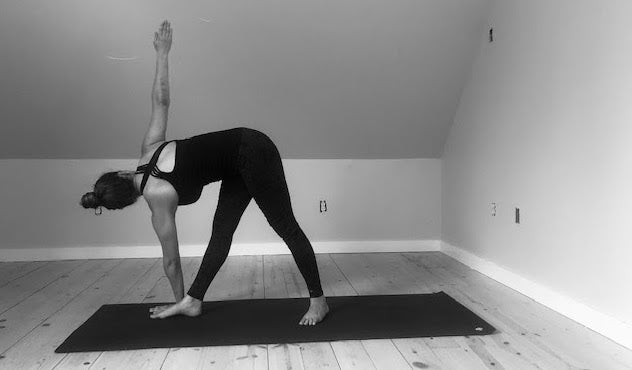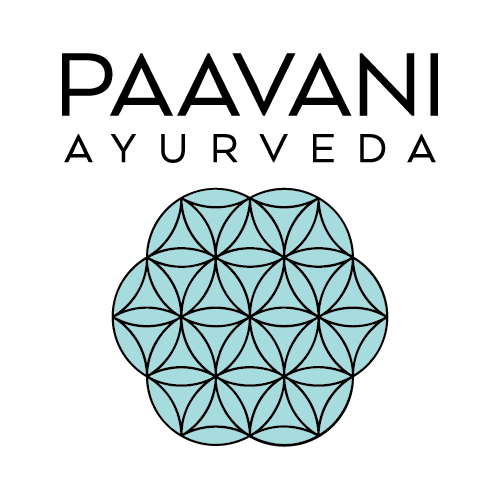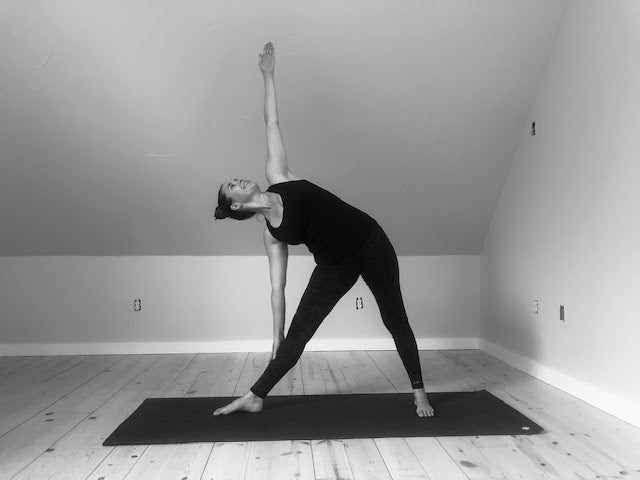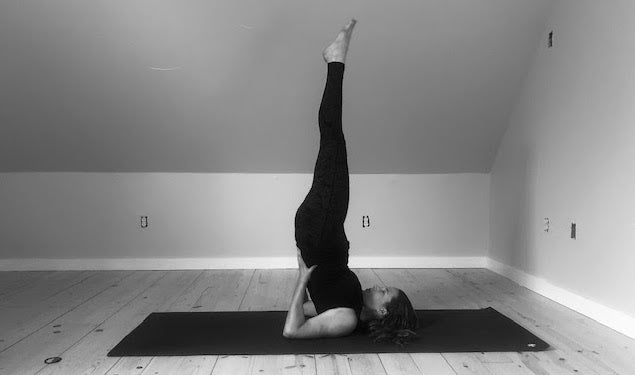
Parivrtta Trikonasana: An Ayurvedic Guide to Revolved Triangle

Parivrtta Trikonasana, or Revolved Triangle Pose, is the counterbalancing posture to Utthita Trikonasana (Triangle) and is one of the more challenging standing postures in Yoga. This pose requires full attention and focus. Moreover, Revolved Triangle Pose truly puts the Yogic theory of staying in the present moment into action. What makes this posture so challenging is that it not only requires balance and coordination but it also requires us to move into a twist that should initiate at the thoracic spine, a region of the spine that is notoriously inflexible. The tendency is for the twisting action to come from the hips or neck; however, these actions will not bring you into proper alignment nor will they build strength and flexibility in the thoracic spine nor will doing the pose incorrectly help you establish a greater awareness of the mind body relationship. In short, Parivrtta Trikonasana is a complex, challenging posture that when done correctly has numerous benefits. Some other benefits of this posture include:
Revolved Triangle is balancing to all three doshas:
Vata- The focus required in this posture helps to ground and calm the sometimes fast and anxious mind associated with vata dosha. Also, because of its twisting action, Revolved Triangle can also stimulate elimination and thus pacify vata type constipation. For best results, hold the posture for an extended period of time, at least 5 rounds of breath, in order to root and replenish.
Pitta- An excellent posture to expel excess heat from the organs and also it massages the internal organs, aiding in optimal digestion. For best results, hold the posture without strain and take long, easy breaths in and out to pacify pitta.
Kapha- Revolved Triangle balances kapha in many ways. First, the twisting action strongly purifies the organs of digestion and also stimulates jathara agni, or our digestive fire, which helps to counterbalance sluggish digestion associated with kapha dosha. This is a physically challenging pose so it will help tonify the muscles of the body. Finally, Revolved Triangle opens the chest, helping to relieve heaviness and congestion in the lungs. For best results, repeat the pose several times on each side.
How to do Parivrtta Trikonasana:
- Begin in Tadasana (Mountain Pose).
- Step the right foot back, allowing the feet to be 3 feet distance apart.
- Bring the right foot to a 45 degree angle and ground firmly into the outer edge of the foot.
- Have the left toes pointing forward and keep both legs strong but be aware to not lock out the left knee.
- The pelvis is forward or in other words, your hips are facing forward.
- Once feeling strong and steady in the legs and square through the hips, exhale and hinge at your hips. Bring your hands to the floor or onto the fingertips.
- Lift the center of your chest forward.
- Initiate the twist from the middle of the back or thoracic spine.
- If available, place the right hand to the outside of the left foot. If this is not available, keep the right hand parallel with the inside of the left foot.
- Use your hands and feet as a foundation, draw the belly in and continue to move into the twist.
- Extend the left arm up and, if comfortable for the neck, allow your gaze to follow the left hand and look upward. You can also keep the neck in a neutral position.
- Keep a strong foundation in your legs and feel energy extend out through the crown of your head.
- Hold for 5 rounds of breath.
- Inhale to come up and out of the posture.
- Step back to Tadasana.
- Repeat this series on the opposite side.
Precautions:
Contraindications for Parivrtta Trikonasana:





2 comments
@AP.RAVICHANDRAN Yes it does! If samana vayu is low, Parivrtta Trikonasana can help increase samana vayu as well as jatharagni, our digestive fire. Further, this helps to improve healthy digestion.
PAAVANI Ayurveda
Does Parivrtta Trikonasana helps in balancing Samana Vayu? Pl guide.
AP.Ravichandran
Leave a comment
This site is protected by hCaptcha and the hCaptcha Privacy Policy and Terms of Service apply.